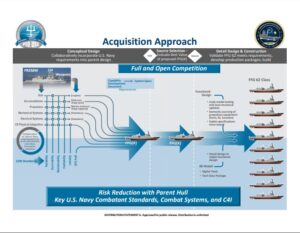
A Navy official on Wednesday argued that changes to the parent design of the Constellation-class frigate largely came from the initial bid to meet the Navy’s requirements. “From a FREMM perspective, discounting C4I and discounting the combat systems weapons that are all government furnished equipment, the FREMM came along with a hull, accommodations, came along with propulsion, plant layout, mechanical systems, electrical systems and a physical integrated plant as far as how it's just laid out. All that goodness is…

 By
By 











